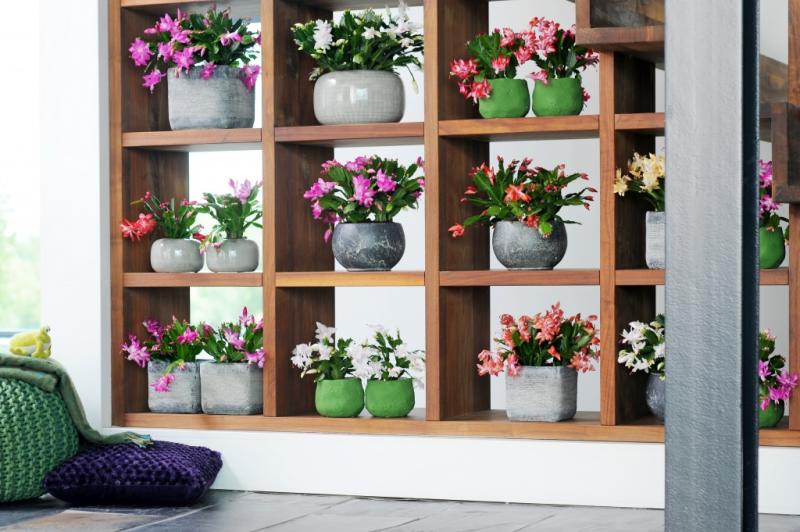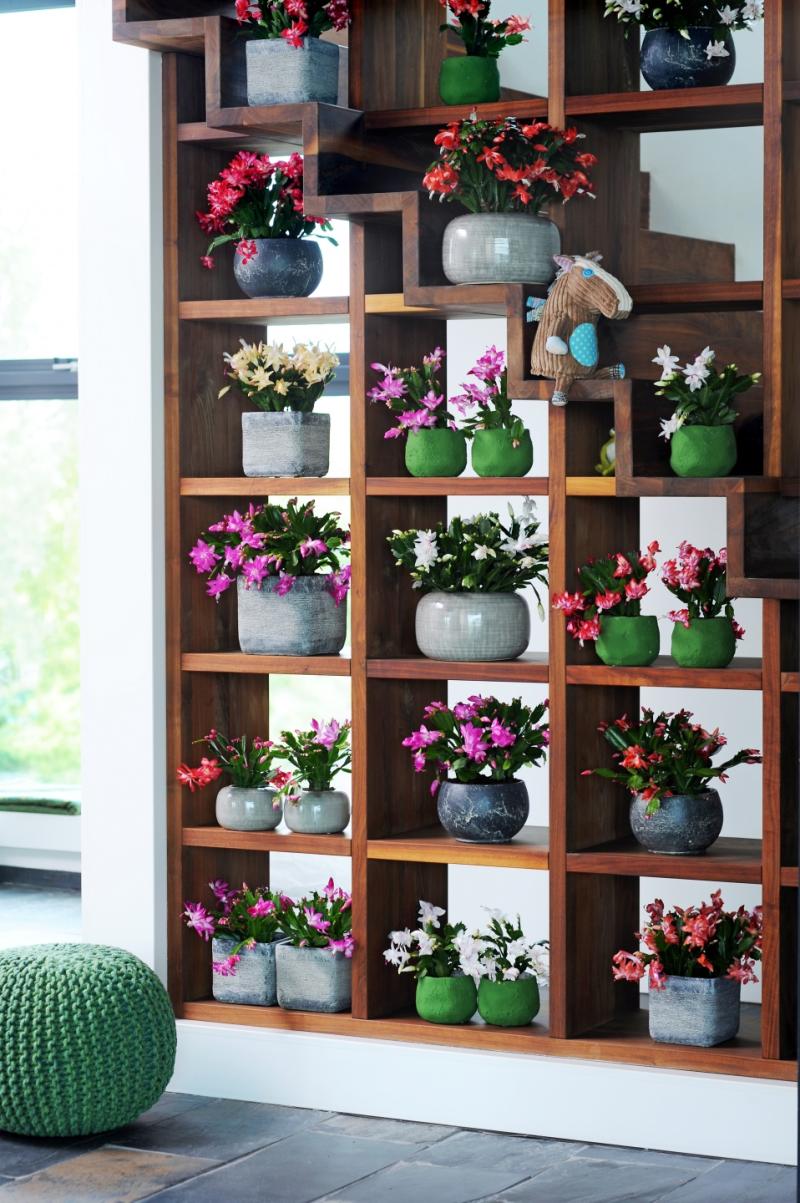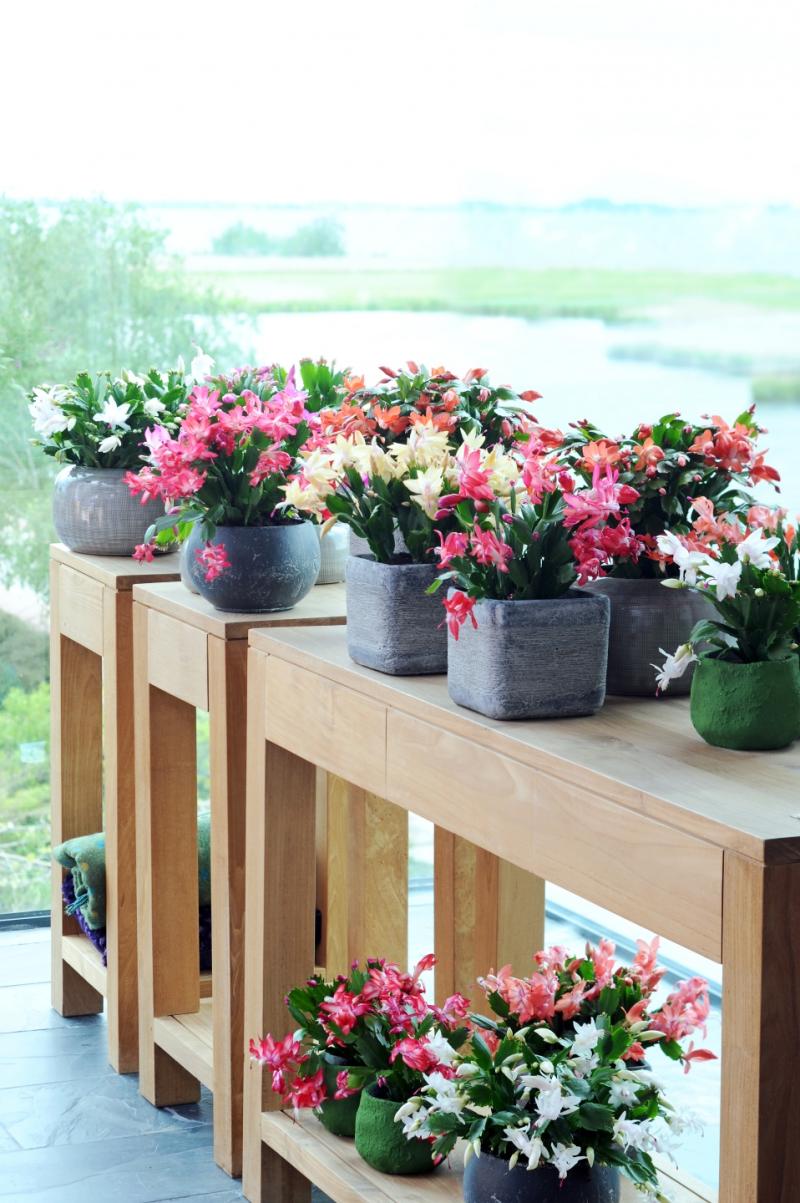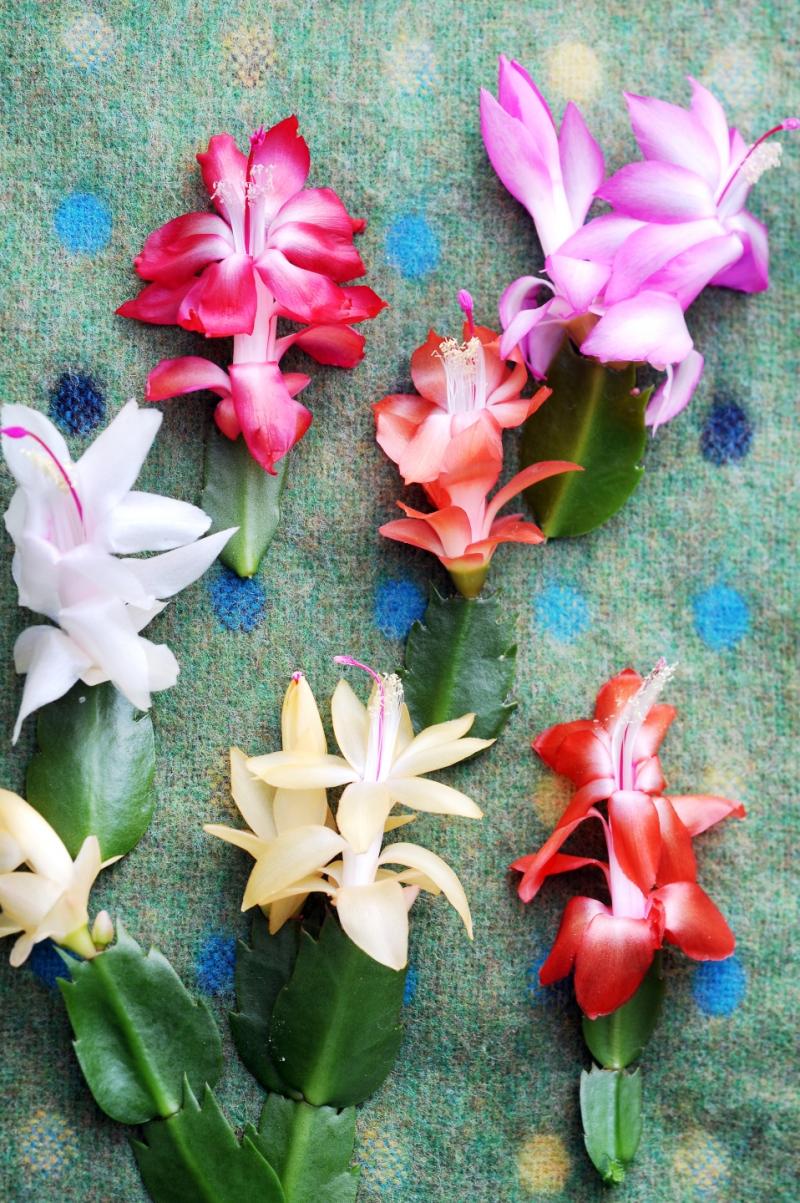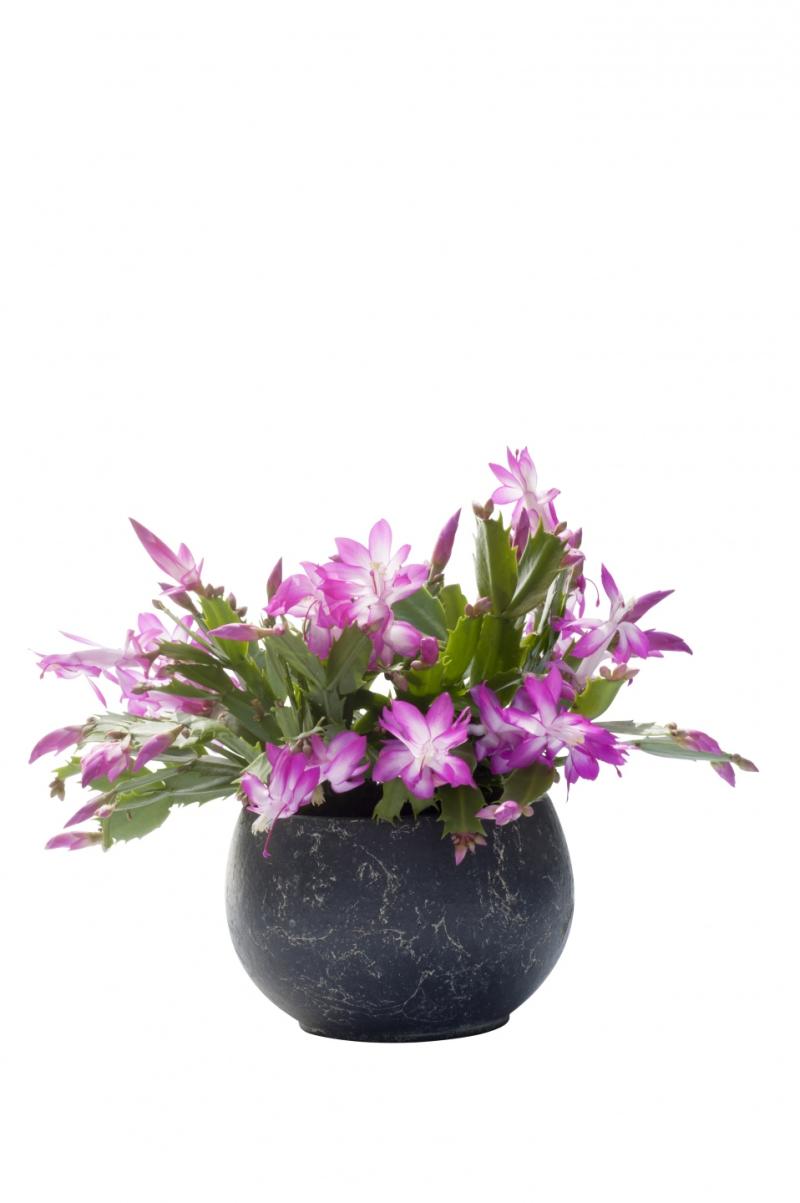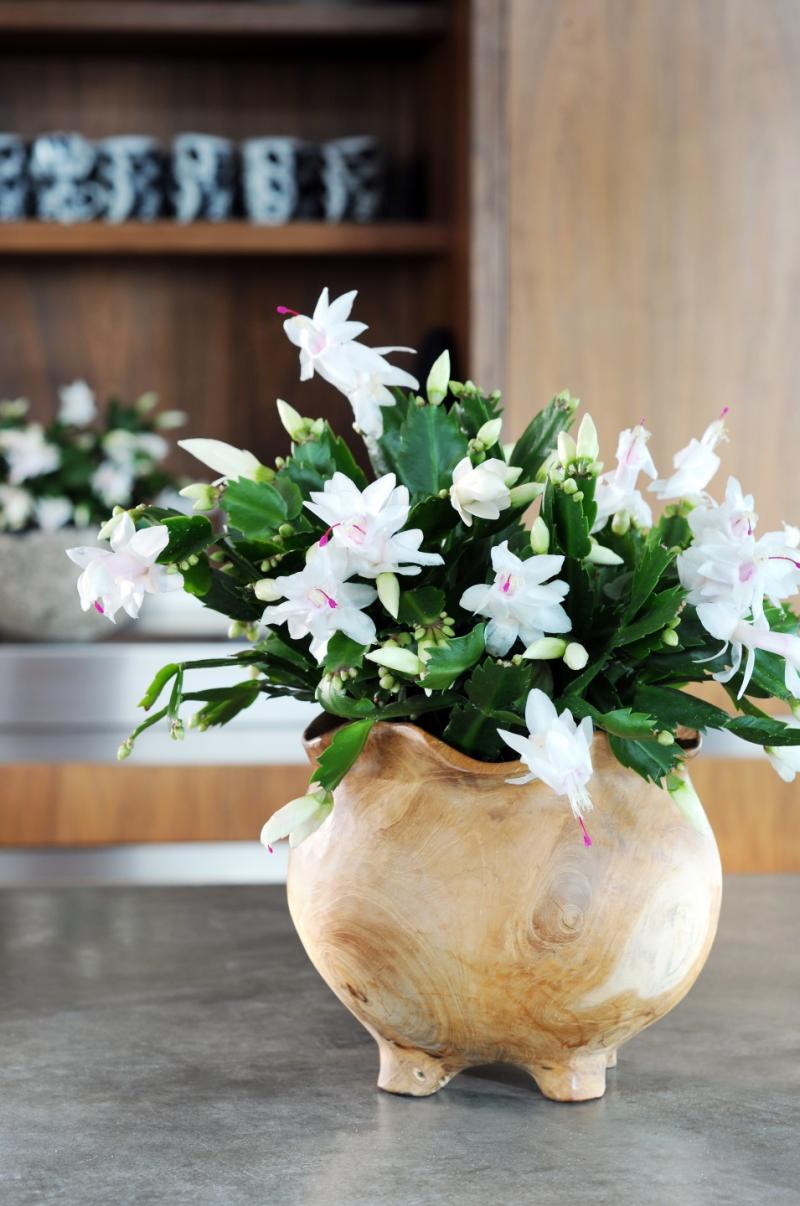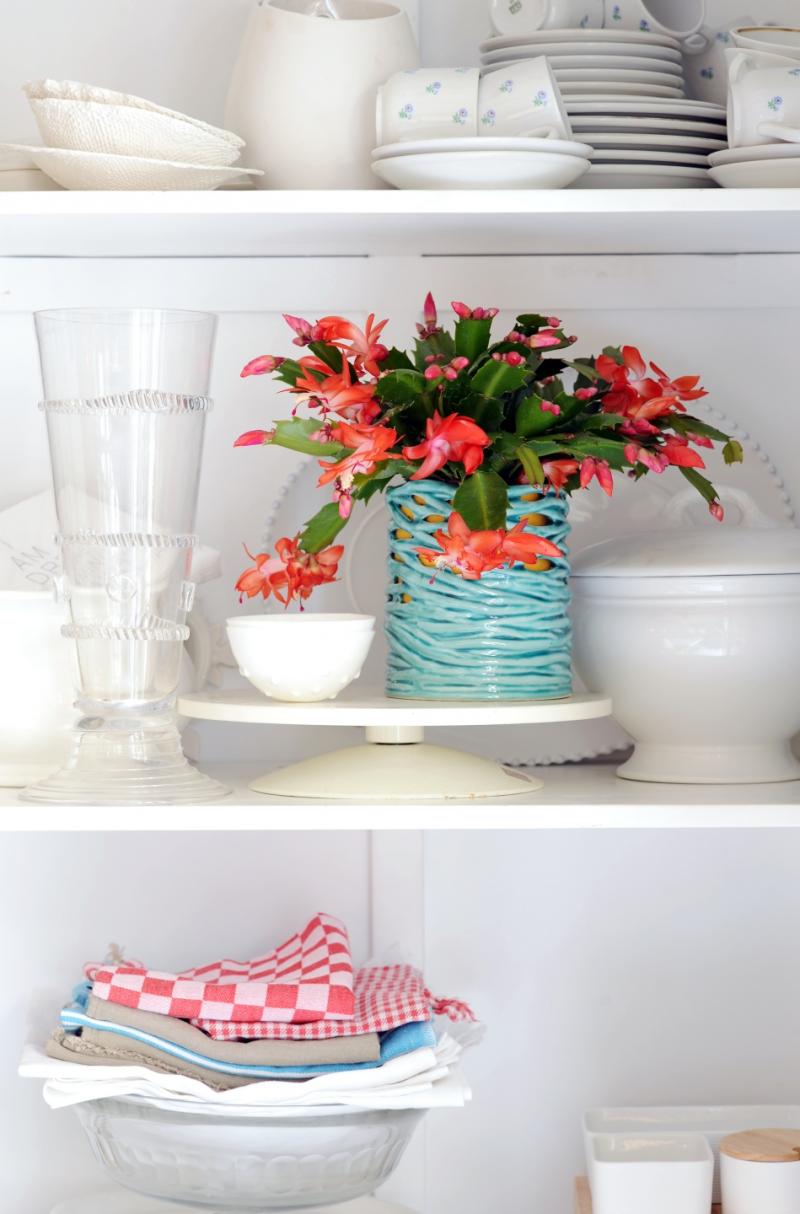November 2014: Schlumbergera is Houseplant of the month
In November 2014 the Schlumbergera, also known as the Christmas cactus, is Houseplant of the month. Each month we choose a Houseplant of the month and you can also join in with this campaign. That is really easy with our free to download POS material, which you can find underneath in the link.
The story of the Schlumbergera
The Schlumbergera belongs to the Cactaceae family. Its stems are made up of flat segments, it branches out heavely and only has a few thorns. The flowers have folded back petals.
The plant originates from Brazil, where the Schlumbergera grows at heights of 400 – 2,000 meters as an epiphyte. This means that it grows in trees without consuming food from them. The plant stores reserve feed and moisture in its meaty leaves to overcome the dryer seasons.
Schlumbergera production
The plant is a short day plant, i.e. it produces buds in days shorter than 9 hours. The grower can therefore influence flowering by lighting or blackout. The most extensive supply of Schlumbergeras is from September to April and the plant is also supplied under the synonyms Cereus, Epiphyllum, Rhipsalidopsis and Zygocactus.
What should you look out for when purchasing Schlumbergeras?
• Pot size, plant height and minimum number of flowers per plant.
• Health. The plant needs to be free of pests and diseases and must not be stored for too long in the dark (buds dropping off), with too much water (stem rot), or too little water (drying out).
• Scale insects, which are difficult to control.
• Transport and storage conditions. Damaged buds, flowers or leaves and dropping buds is often a result of transport or storage conditions. This can also be caused by ethylene from fruit.
• Storage and transport temperature. This should be around 12°C. Schlumbergeras should be sleeved to avoid cold damage (dark marks on the leaves).
• Maturity. Immature plants will not develop as easily in winter months with less light.
Range of Schlumbergeras
There is a limit to the range of Schlumbergeras. The plants are often sold by colour and not by cultivar name. The most common colours are red, pink, white, purple, orange and bi-coloured varieties. The Schlumbergera is sometimes confused with Rhipsalidopsis, the so-called Easter cactus. This is a similar cactus which we come across in the first five months of the year. The difference is easy to spot: Schlumbergera plants have serrated segments and Rhipsalidopsis don’t.
Care tips for consumers
The Schlumbergera is an easy houseplant. The plant likes a light to sunny position, inside or outside, as long as the temperature stays above 12°C. Because of its meaty leaves the plant doesn’t need a lot of watering, only about once a week. Also give it some plant food once every two weeks. The Schlumbergera can easily flower for six weeks, but you must remove the dead flowers. After the flowering period, the plant can be placed in a slightly cooler position. For it to flower again an optimum temperature would be about 20°C. The buds will start to show again from October and the plant will flower again.
Creative tips for the Schlumbergera
The Schlumbergera is one of the easiest flowering houseplants for the home, office, school or public space. They are also ideal gifts in the autumn and winter, because of their many different sizes from mini to large bowls. The colours are well suited to make lovely combinations for Halloween, Grandparents Day, Advent or Christmas.


